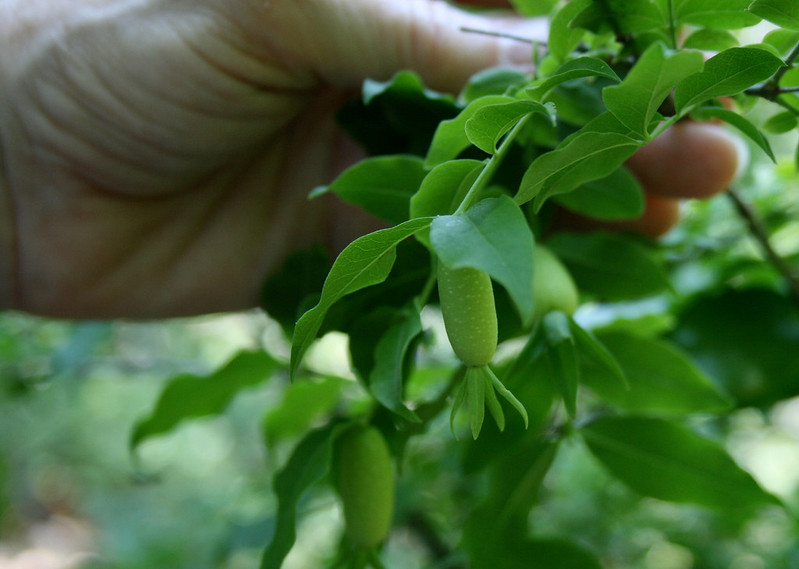
Piratebush (Buckleya distichophylla) is a globally rare shrub that thrives at Poor Mountain Natural Area Preserve near Salem, Virginia.
Poor Mountain Natural Area Preserve in Roanoke County has expanded by 394 acres.
The Virginia Department of Conservation and Recreation, the agency that owns and manages the preserve, acquired the additional land in four separate transactions over the last few months. The final transaction was completed at the end of 2020.
The preserve is now 1,326 acres.
“Poor Mountain Natural Area Preserve is one of Virginia’s great treasures,” DCR Director Clyde Cristman said. “The expansion adds an important buffer along the western edge of the property. As part of the state natural area preserve system, these forested lands are permanently protected from fragmentation and incompatible use.”
Located about a mile south of Salem city limits, Poor Mountain Natural Area Preserve is at the center of a large unfragmented forest. Within the understory of this forest is the world’s largest known population of a globally rare shrub called piratebush (Buckleya distichophylla).
Governor Ralph Northam’s ConserveVirginia land conservation initiative identifies the additions as conservation priorities in the following categories: Agriculture & Forestry, Floodplains & Flooding Resilience, Natural Habitat & Ecosystem Diversity, and Protected Landscapes Resilience.
”Poor Mountain Natural Area Preserve now protects more than half of a 2,000-acre forested core, in a landscape with increasing threat of forest fragmentation,” DCR Virginia Natural Heritage Program Director Jason Bulluck said. “In a time when 70% of the world’s remaining forested areas are less than 1 km from a forest edge, Poor Mountain will only become more exceptional and invaluable. It is exceedingly important that land protection efforts preserve multiple ecosystem services, from biodiversity and rare species habitat, to clean water and air.”
The preserve’s forested slopes constitute a portion of the headwaters of four watersheds that flow into the Roanoke River. Protecting and managing these forested headwaters for biodiversity benefits the river’s water quality, as plant roots and soil fungi filter out excess nutrients and guard against erosion.
Protected forest also helps to mitigate the impact of urban heat islands in developed areas through evapotranspiration, the process by which trees draw water from their roots to their leaves. This process has a cooling effect on air temperature in the Roanoke Valley, the most developed area in Virginia’s Blue Ridge.
Funding for the expansion came from a grant awarded through the Forest CORE (Community Opportunities for Restoration and Enhancement) Fund — a component of the Virginia Outdoors Foundation TERRA program, which administers funds resulting from legal and regulatory actions involving Virginia’s natural resources. The Forest CORE Fund was established with $15 million received by the Commonwealth of Virginia to mitigate for forest fragmentation caused by the Mountain Valley Pipeline.
Poor Mountain Natural Area Preserve was established in the early 1990s through The Nature Conservancy’s Partners in Conservation project, the 1992 Virginia Parks and Natural Areas Bond, and the Open Space Recreation and Conservation Fund.
The preserve has four miles of hiking trails that range from relatively easy to steep and strenuous. The parking area is limited to 10 vehicles. Visitors who arrive to find a full parking area are asked to wait for a space to open or come back at another time. Parking is permitted in designated spaces only.
- Submitted by Julie Buchanan, Senior Public Relations and Marketing Specialist





